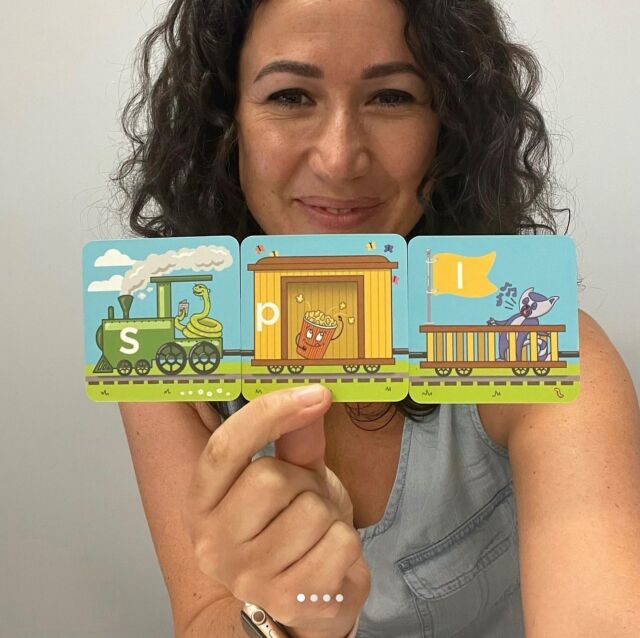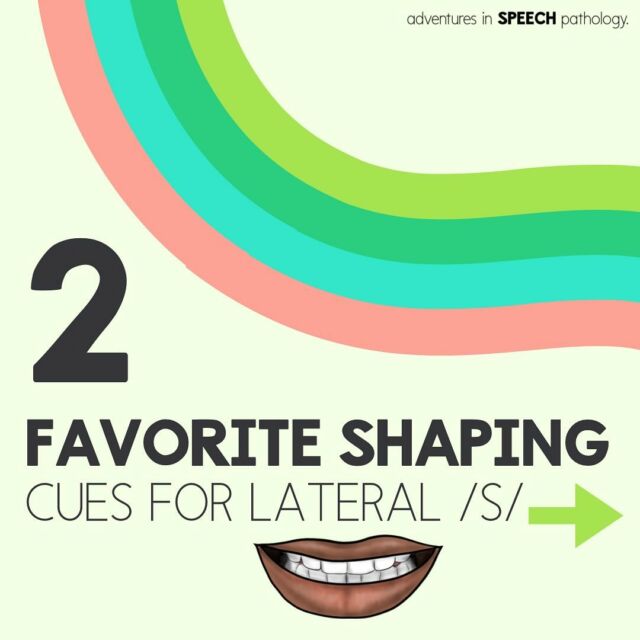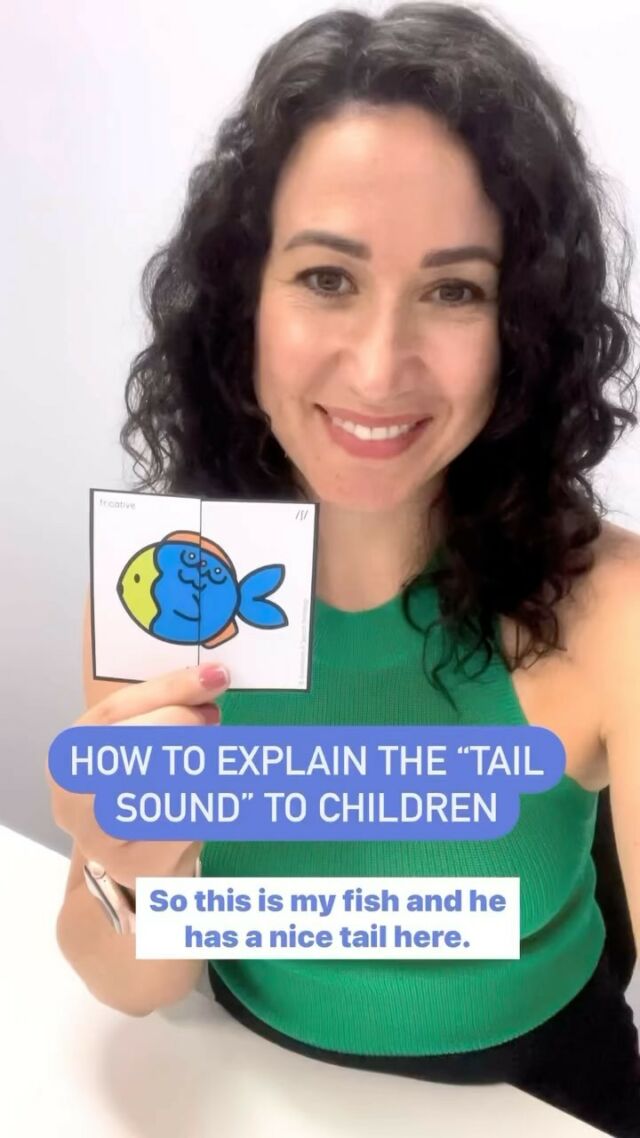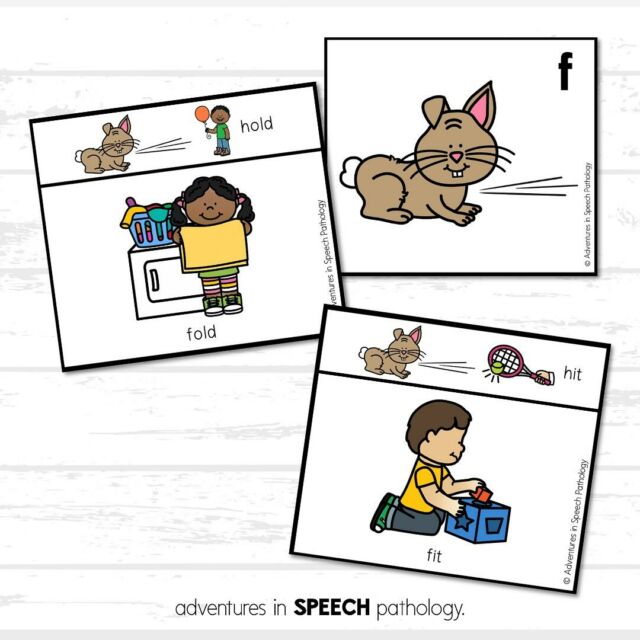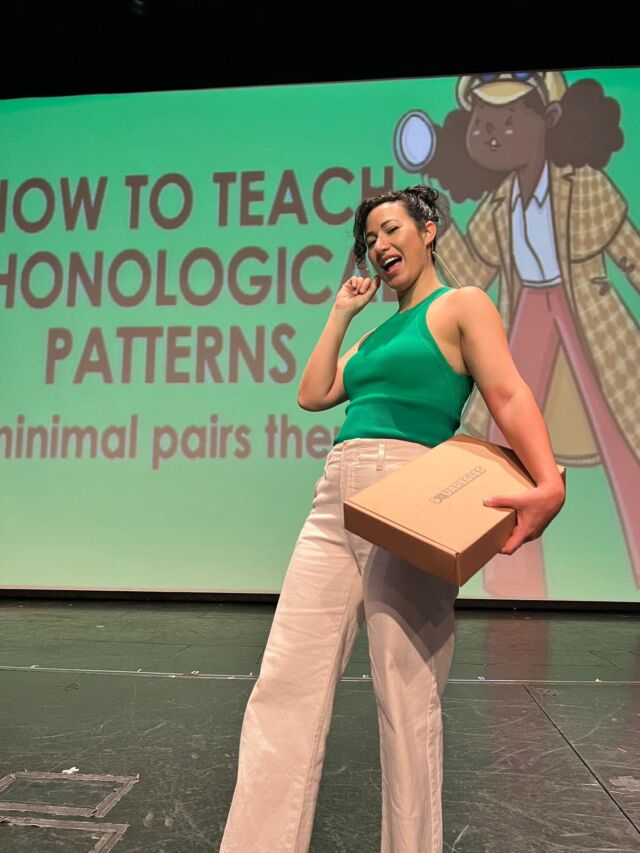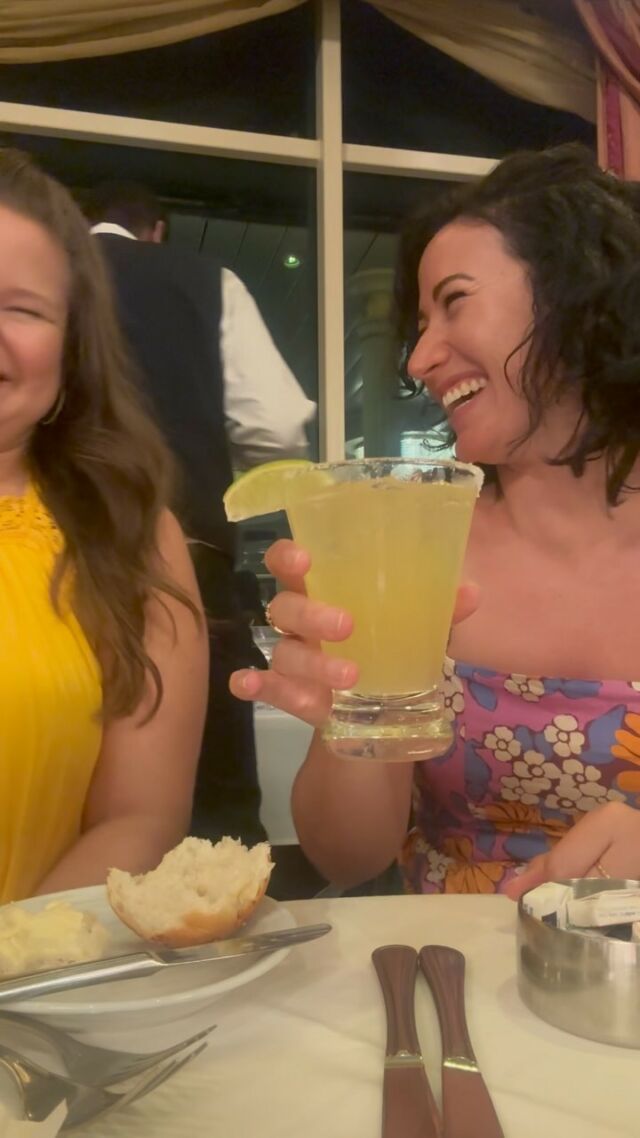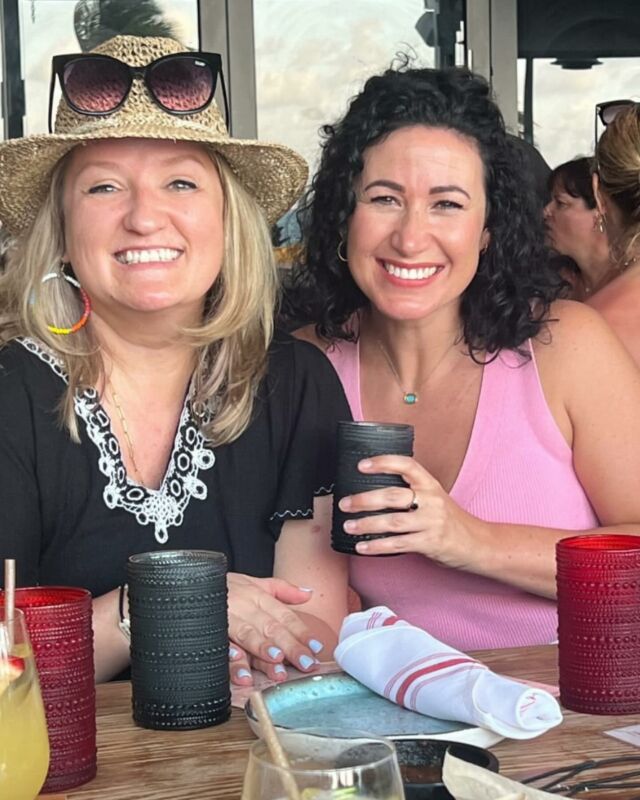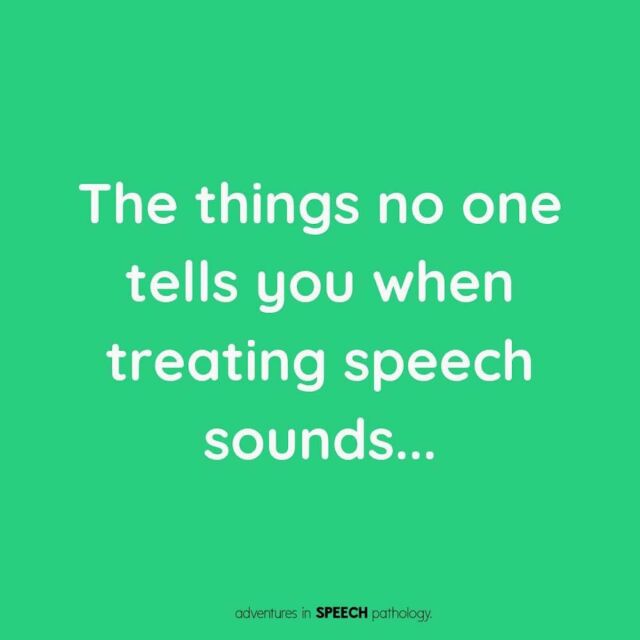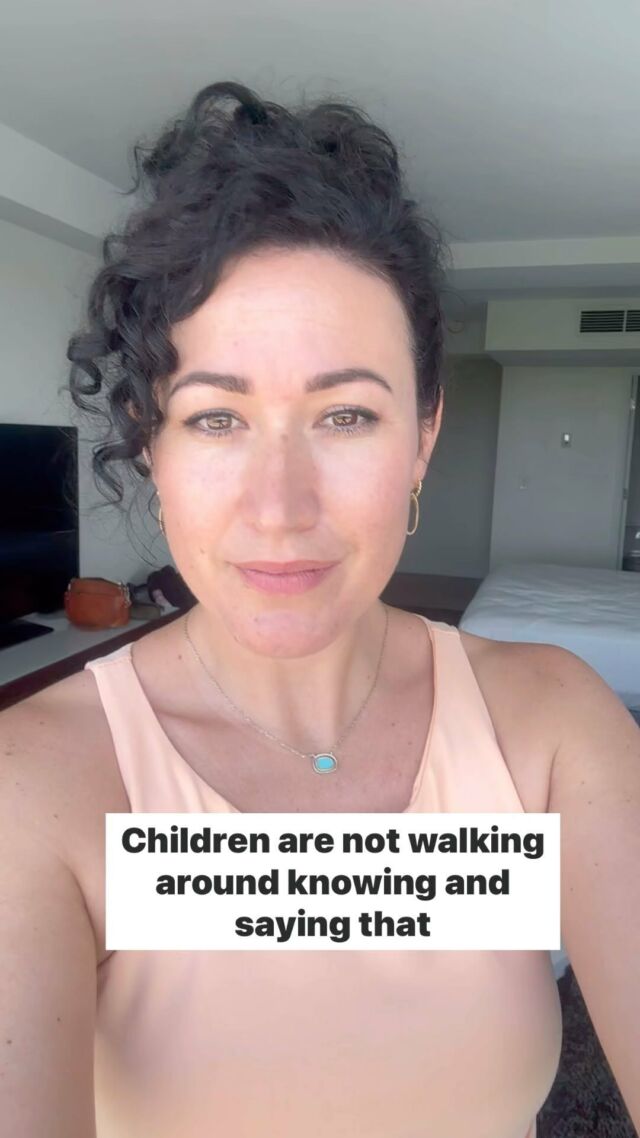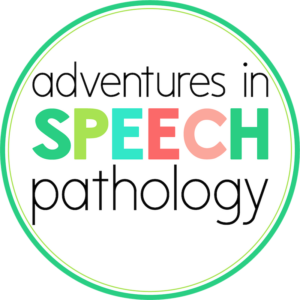Phonology
PHONOLOGY ESSENTIALS
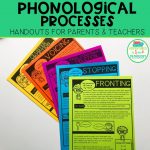 Phonological Processes Handouts: My best selling, easy to read handouts to describe phonological processes to parents and teachers. These are great to provide at IEP meetings, as part of an assessment or evaluation or just for general information. Each page focuses on one specific phonological process (e.g. a page on cluster reduction and a page on fronting) with the most common processes in English included. For more information on this resource, you can VIEW HERE.
Phonological Processes Handouts: My best selling, easy to read handouts to describe phonological processes to parents and teachers. These are great to provide at IEP meetings, as part of an assessment or evaluation or just for general information. Each page focuses on one specific phonological process (e.g. a page on cluster reduction and a page on fronting) with the most common processes in English included. For more information on this resource, you can VIEW HERE.
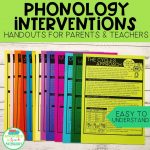
Phonology Intervention Handouts: Open the communication with these parent and teacher friendly handouts. Each page focuses on a specific phonological intervention that speech-language pathologists use including minimal pairs, cycles, multiple oppositions and the articulation approach. This is a great way to inform and educate parents in your therapy sessions about WHAT you are doing. For more information on this resource, you can VIEW HERE.
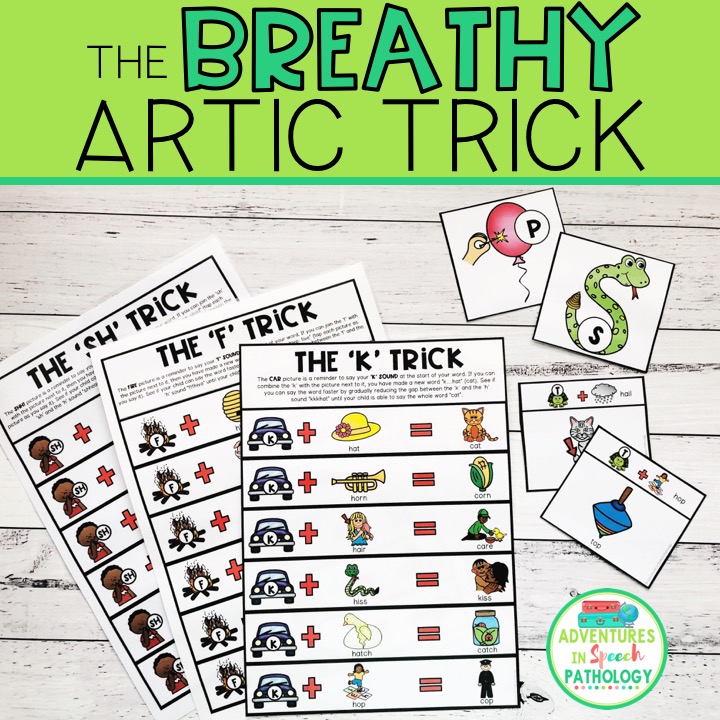 The Breathy Artic Trick: Also known as the ‘h’ insertion’ trick, this packet includes cards and full page visuals to help you implement this ‘trick’. It can be particularly useful for children who show stopping, voicing and fronting of the ‘k’ sound. The packet includes bright, colorful images and black & white copies so that they are easy to send home. If you’re not familiar, the trick teaches you to insert a ‘h’ sound or word after the initial sound. For more information on this resource, you can VIEW HERE.
The Breathy Artic Trick: Also known as the ‘h’ insertion’ trick, this packet includes cards and full page visuals to help you implement this ‘trick’. It can be particularly useful for children who show stopping, voicing and fronting of the ‘k’ sound. The packet includes bright, colorful images and black & white copies so that they are easy to send home. If you’re not familiar, the trick teaches you to insert a ‘h’ sound or word after the initial sound. For more information on this resource, you can VIEW HERE.
CLUSTER REDUCTION
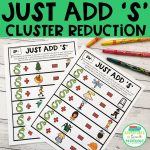
Just Add ‘S’ Cluster Reduction: This is a visual, auditory and tactile way to help children say their s-blends. TRY MY FREE SAMPLE NOW. The strips encourage students to add ‘s’ to the start of the word and blend together to make a new word. Both color and black & white strips are included, and extra visual cards of the “just add ‘s'” as a reminder. For more information on this resource, you can VIEW HERE.
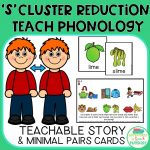
Teach Phonology ‘S’ Cluster Reduction Story and Minimal Pairs Cards: Make phonology easier to understand and teach the idea that words have ‘twin sounds’. A fun story introduces the phonological rule that you will teach and this is something that you can continue use throughout therapy. This combines visual-auditory-tactile therapy ideas using a metalinguistic approach. Minimal pairs cards in colour and black & white included. For more information on this resource, you can VIEW HERE.
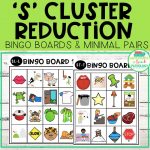 ‘S’ Cluster Reduction Bingo Boards & Minimal Pairs: Take a minimal pairs approach to the phonological process of Cluster Reduction with these bingo boards. There are four different boards per target sound and they can be useful for speech groups. Clusters include: ‘sl’, ‘st’, ‘sp’, ‘sw’ and ‘sk’. Get a lot of practice in with eight minimal pairs to a board. These boards come in colour only, so they are best to laminate and keep for durability. For more information VIEW HERE.
‘S’ Cluster Reduction Bingo Boards & Minimal Pairs: Take a minimal pairs approach to the phonological process of Cluster Reduction with these bingo boards. There are four different boards per target sound and they can be useful for speech groups. Clusters include: ‘sl’, ‘st’, ‘sp’, ‘sw’ and ‘sk’. Get a lot of practice in with eight minimal pairs to a board. These boards come in colour only, so they are best to laminate and keep for durability. For more information VIEW HERE.
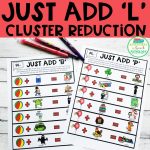 Just Add ‘L’ Cluster Reduction: This is a visual, auditory and tactile way to help children say their l-blends. TRY MY FREE SAMPLE NOW. The strips encourage students to add sounds to the start of the word and blend together to make a new word. Both color and black & white included, and extra visual cards of the “just add ‘l'” as a reminder. For more information on this resource, you can VIEW HERE.
Just Add ‘L’ Cluster Reduction: This is a visual, auditory and tactile way to help children say their l-blends. TRY MY FREE SAMPLE NOW. The strips encourage students to add sounds to the start of the word and blend together to make a new word. Both color and black & white included, and extra visual cards of the “just add ‘l'” as a reminder. For more information on this resource, you can VIEW HERE.
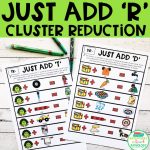 Just Add ‘R’ Cluster Reduction: This is a visual, auditory and tactile way to help children say their r-blends. TRY MY FREE SAMPLE NOW. The strips encourage students to add sounds to the start of the word and blend them together to make a new word. Both color and black & white versions included, and extra visual cards of the “just add ‘r'” as a reminder. For more information on this resource, you can VIEW HERE.
Just Add ‘R’ Cluster Reduction: This is a visual, auditory and tactile way to help children say their r-blends. TRY MY FREE SAMPLE NOW. The strips encourage students to add sounds to the start of the word and blend them together to make a new word. Both color and black & white versions included, and extra visual cards of the “just add ‘r'” as a reminder. For more information on this resource, you can VIEW HERE.
FRONTING/BACKING
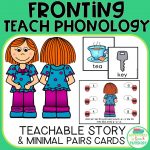 Teach Phonology Fronting Story and Minimal Pairs Cards: Make phonology easier to understand and teach the idea that words have ‘front’ and ‘back’ sounds. A fun story introduces the phonological rule that you will teach and this is something that you can continue use throughout therapy. This combines visual-auditory-tactile therapy ideas using a metalinguistic approach. Minimal pairs cards in colour and black & white included. For more information on this resource, you can VIEW HERE.
Teach Phonology Fronting Story and Minimal Pairs Cards: Make phonology easier to understand and teach the idea that words have ‘front’ and ‘back’ sounds. A fun story introduces the phonological rule that you will teach and this is something that you can continue use throughout therapy. This combines visual-auditory-tactile therapy ideas using a metalinguistic approach. Minimal pairs cards in colour and black & white included. For more information on this resource, you can VIEW HERE.
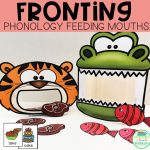 Fronting Phonology Feeding Mouths: With a strong focus on minimal pairs therapy, these Fronting Feeding Mouths have animals represent the sounds (e.g. ‘t’ for tiger, ‘k’ for crocodile). There is food included to make this a cute reinforcer activity (e.g. meat for the tiger and fish for the crocodile). It can be more engaging and meaningful for your younger students with phonological errors, however older children will enjoy it too. For more information on this resource, you can VIEW HERE.
Fronting Phonology Feeding Mouths: With a strong focus on minimal pairs therapy, these Fronting Feeding Mouths have animals represent the sounds (e.g. ‘t’ for tiger, ‘k’ for crocodile). There is food included to make this a cute reinforcer activity (e.g. meat for the tiger and fish for the crocodile). It can be more engaging and meaningful for your younger students with phonological errors, however older children will enjoy it too. For more information on this resource, you can VIEW HERE.
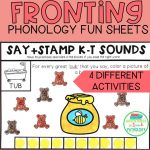
Fronting Phonology Fun Sheets: This is a full packet of black & white resources, that really focus on the contrasts for Fronting phonology therapy. It’s a great way to mix up traditional minimal pairs therapy and you might find it particularly useful to send for homework to transfer that practice into the home environment. There are four different fun craft-style activities with opportunities for high repetitions, so your student’s shouldn’t get bored. For more information on this resource, you can VIEW HERE.
STOPPING
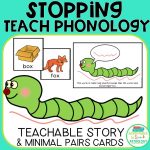 Teach Phonology Stopping Story and Minimal Pairs Cards: Make phonology easier to understand and teach the idea that words have ‘long’ and ‘short’ sounds. A fun story introduces the phonological rule that you will teach and this is something that you can continue use throughout therapy. This combines visual-auditory-tactile therapy ideas using a metalinguistic approach. Minimal pairs cards in colour and black & white included. For more information on this resource, you can VIEW HERE.
Teach Phonology Stopping Story and Minimal Pairs Cards: Make phonology easier to understand and teach the idea that words have ‘long’ and ‘short’ sounds. A fun story introduces the phonological rule that you will teach and this is something that you can continue use throughout therapy. This combines visual-auditory-tactile therapy ideas using a metalinguistic approach. Minimal pairs cards in colour and black & white included. For more information on this resource, you can VIEW HERE.
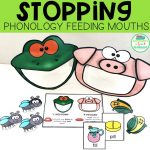 Stopping Phonology Feeding Mouths: With a strong focus on minimal pairs therapy, these Stopping Feeding Mouths have animals represent the sounds (e.g. ‘f’ for frog, ‘p’ for pig). There is food included to make this a cute reinforcer activity (e.g. flies for the frog and corn for the pig). It can be more engaging and meaningful for your younger students with phonological errors, however older children will enjoy it too. For more information on this resource, you can VIEW HERE.
Stopping Phonology Feeding Mouths: With a strong focus on minimal pairs therapy, these Stopping Feeding Mouths have animals represent the sounds (e.g. ‘f’ for frog, ‘p’ for pig). There is food included to make this a cute reinforcer activity (e.g. flies for the frog and corn for the pig). It can be more engaging and meaningful for your younger students with phonological errors, however older children will enjoy it too. For more information on this resource, you can VIEW HERE.
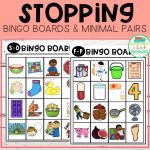
Stopping Bingo Boards & Minimal Pairs: Take a minimal pairs approach to the phonological process of Stopping with these bingo boards. There are four different boards per target sound and they can be useful for speech groups. Get a lot of practice in with eight minimal pairs to a board. These boards come in colour only, so they are best to laminate and keep for durability. For more information on this resource, you can VIEW HERE.
FINAL CONSONANT DELETION
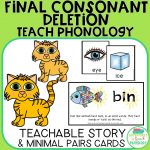 Teach Phonology Final Consonant Deletion Story and Minimal Pairs Cards: Make phonology easier to understand and teach the idea that words have ‘tail’ sounds. A fun story introduces the phonological rule that you will teach and this is something that you can continue use throughout therapy. This combines visual-auditory-tactile therapy ideas using a metalinguistic approach. Minimal pairs cards in colour and black & white included. For more information on this resource, you can VIEW HERE.
Teach Phonology Final Consonant Deletion Story and Minimal Pairs Cards: Make phonology easier to understand and teach the idea that words have ‘tail’ sounds. A fun story introduces the phonological rule that you will teach and this is something that you can continue use throughout therapy. This combines visual-auditory-tactile therapy ideas using a metalinguistic approach. Minimal pairs cards in colour and black & white included. For more information on this resource, you can VIEW HERE.
VOICING/DEVOICING
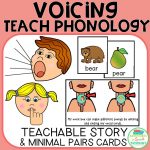 Teach Phonology Voicing Story and Minimal Pairs Cards: Make phonology easier to understand and teach the idea that words have ‘noisy’ and ‘quiet’ sounds. A fun story introduces the phonological rule that you will teach and this is something that you can continue use throughout therapy. This combines visual-auditory-tactile therapy ideas using a metalinguistic approach. Minimal pairs cards in colour and black & white included. For more information on this resource, you can VIEW HERE.
Teach Phonology Voicing Story and Minimal Pairs Cards: Make phonology easier to understand and teach the idea that words have ‘noisy’ and ‘quiet’ sounds. A fun story introduces the phonological rule that you will teach and this is something that you can continue use throughout therapy. This combines visual-auditory-tactile therapy ideas using a metalinguistic approach. Minimal pairs cards in colour and black & white included. For more information on this resource, you can VIEW HERE.
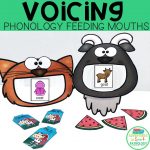 Voicing Phonology Feeding Mouths: With a strong focus on minimal pairs therapy, these Voicing Feeding Mouths have animals represent the sounds (e.g. ‘k’ for cat, ‘g’ for goat). There is food included to make this a cute reinforcer activity (e.g. milk for cat, watermelon for the goat). It can be more engaging and meaningful for your younger students with phonological errors, however older children will enjoy it too. For more information on this resource, you can VIEW HERE.
Voicing Phonology Feeding Mouths: With a strong focus on minimal pairs therapy, these Voicing Feeding Mouths have animals represent the sounds (e.g. ‘k’ for cat, ‘g’ for goat). There is food included to make this a cute reinforcer activity (e.g. milk for cat, watermelon for the goat). It can be more engaging and meaningful for your younger students with phonological errors, however older children will enjoy it too. For more information on this resource, you can VIEW HERE.
GLIDING
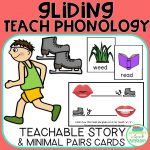 Teach Phonology Gliding Story and Minimal Pairs Cards: Make phonology easier to understand and teach the idea that words have ‘gliding’ and ‘running’ sounds. A fun story introduces the phonological rule that you will teach and this is something that you can continue use throughout therapy. This combines visual-auditory-tactile therapy ideas using a metalinguistic approach. Minimal pairs cards in colour and black & white included. For more information on this resource, you can VIEW HERE.
Teach Phonology Gliding Story and Minimal Pairs Cards: Make phonology easier to understand and teach the idea that words have ‘gliding’ and ‘running’ sounds. A fun story introduces the phonological rule that you will teach and this is something that you can continue use throughout therapy. This combines visual-auditory-tactile therapy ideas using a metalinguistic approach. Minimal pairs cards in colour and black & white included. For more information on this resource, you can VIEW HERE.
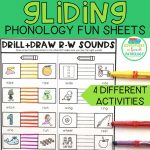 Gliding Phonology Fun Sheets: This is a full packet of black & white resources, that really focus on the contrasts for gliding phonology therapy. It’s a great way to mix up traditional minimal pairs therapy and you might find it particularly useful to send for homework to transfer that practice into the home environment. There are four different fun craft-style activities with opportunities for high repetitions, so your student’s shouldn’t get bored. For more information on this resource, you can VIEW HERE.
Gliding Phonology Fun Sheets: This is a full packet of black & white resources, that really focus on the contrasts for gliding phonology therapy. It’s a great way to mix up traditional minimal pairs therapy and you might find it particularly useful to send for homework to transfer that practice into the home environment. There are four different fun craft-style activities with opportunities for high repetitions, so your student’s shouldn’t get bored. For more information on this resource, you can VIEW HERE.
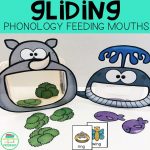 Gliding Phonology Feeding Mouths: With a strong focus on minimal pairs therapy, these Gliding Feeding Mouths have animals represent the sounds (e.g. ‘k’ for cat, ‘g’ for goat). There is food included to make this a cute reinforcer activity. It can be more engaging and meaningful for your younger students with phonological errors, however older children will enjoy too. For more information on this resource, you can VIEW HERE.
Gliding Phonology Feeding Mouths: With a strong focus on minimal pairs therapy, these Gliding Feeding Mouths have animals represent the sounds (e.g. ‘k’ for cat, ‘g’ for goat). There is food included to make this a cute reinforcer activity. It can be more engaging and meaningful for your younger students with phonological errors, however older children will enjoy too. For more information on this resource, you can VIEW HERE.
APPROACHES
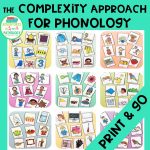 The Complexity Approach for Phonology: There are some great open access journal articles on this approach if you’d like to read more. This packet focuses on two and three element clusters. Some bright and bold articulation cards are included and a range of black & white worksheets are included for practice in the therapy room or at home. Complex clusters include: ‘spr’, ‘spl’, ‘str’, ‘skw’ and more! For more information on this resource, you can VIEW HERE.
The Complexity Approach for Phonology: There are some great open access journal articles on this approach if you’d like to read more. This packet focuses on two and three element clusters. Some bright and bold articulation cards are included and a range of black & white worksheets are included for practice in the therapy room or at home. Complex clusters include: ‘spr’, ‘spl’, ‘str’, ‘skw’ and more! For more information on this resource, you can VIEW HERE.
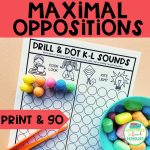 Maximal Oppositions: Maximal Oppositions is a phonological intervention that is similar to minimal pairs, however it contrasts a known sound with an unknown sound. Colour cards and a range of black & white worksheets are included for practice. For more information on this resource, you can VIEW HERE.
Maximal Oppositions: Maximal Oppositions is a phonological intervention that is similar to minimal pairs, however it contrasts a known sound with an unknown sound. Colour cards and a range of black & white worksheets are included for practice. For more information on this resource, you can VIEW HERE.
